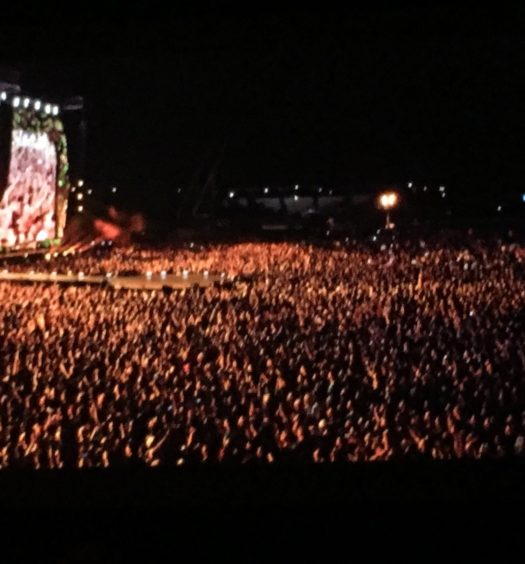The Future of Next Generation OTT and Monetization
 In some ways, the future of Over-the-Top (OTT) appears to be following in its cable TV predecessors’ footsteps. That’s how I felt after hearing a panel on The Future of Next Generation OTT and Monetization, held last month during New York Media Festival’s The Future of Television Summit. And, if you have been following all the recent news in the OTT space – the deals between the OTT platforms and Hollywood — my belief is ringing true.
In some ways, the future of Over-the-Top (OTT) appears to be following in its cable TV predecessors’ footsteps. That’s how I felt after hearing a panel on The Future of Next Generation OTT and Monetization, held last month during New York Media Festival’s The Future of Television Summit. And, if you have been following all the recent news in the OTT space – the deals between the OTT platforms and Hollywood — my belief is ringing true.
 Basically, OTT is Digital TV 5.0 – broadband internet video with such providers as Netflix, Hulu, YouTube, Showtime Anytime and HBO Now. According to Marc Tayer, digital TV veteran and author of Televisionaries, first there was digital TV over satellite in 1994 (PrimeStar, DirecTV), then digital cable in 1997 (Digital TV 2.0); digital terrestrial broadcast (CBS) began in 1999 (Digital TV 3.0), and the fourth generation in the early 2000s saw the telcos enter the TV space with Verizon FiOS and AT&T UVerse (Digital TV 4.0).
Basically, OTT is Digital TV 5.0 – broadband internet video with such providers as Netflix, Hulu, YouTube, Showtime Anytime and HBO Now. According to Marc Tayer, digital TV veteran and author of Televisionaries, first there was digital TV over satellite in 1994 (PrimeStar, DirecTV), then digital cable in 1997 (Digital TV 2.0); digital terrestrial broadcast (CBS) began in 1999 (Digital TV 3.0), and the fourth generation in the early 2000s saw the telcos enter the TV space with Verizon FiOS and AT&T UVerse (Digital TV 4.0).
“Digital TV 5.0 (Internet TV) is the most exciting yet, as there are changes every day,” says Tayer.
The Future of Next Generation OTT and Monetization
Hearing the expert panelists debate the best strategies and techniques to monetize video content over the OTT ecosystem transported me back to the ’80s and my beginnings at Showtime. That’s when cable TV was considered new; the premium networks were all about exclusivity and original programming, and basic cable channels were the new darlings of Madison Avenue.

Rick Howe, the iTV Doctor, Interactive TV Today, moderates a panel at NYME. Credit: Socially Sparked News
Moderated by television veteran Rick Howe, known as the iTV Doctor, Interactive TV Today, the panel of experts in OTT video monetization included Tubi TV’s Andrea Clarke-Hall; DramaFever’s Pamela Nguyen; Plex’ Jason Williams and Vimeo’s Sam Toles.
The Debate Over How to Monetize OTT
Today, there are subscription-based services with and without ads (Netflix, Amazon, Hulu) and free, ad-based services (Tubi TV and Sony’s Crackle). Here are some key takeaways from the panel discussion and the recent state of OTT affairs.
So, how do providers make money in the world of OTT video and livestreaming? In an industry that has over 100 subscription video services available in the OTT space — with a new one launching every week — there is no one-size-fits-all answer. It’s all about personalized TV; catering to the tastes of individual consumers.

Panel of OTT experts at NYME (L-R) Plex’ Jason Williams, DramaFever’s Pamela Nguyen, Tubi TV’s Andrea Clarke-Hall and Vimeo’s Sam Toles
The thing is – it’s a millennial audience right now. There is a strong belief that digital content watchers don’t even subscribe to cable anymore, so there is no interest in the subscriber space for advertising. The consensus at the panel: when it comes to on demand content, people don’t like watching ads unless it is sports or other live events.
The problem with this theory — with the big livestreaming and video providers like Netflix, Hulu, HBO and Showtime, just to name a few – one still needs cable as broadband internet providers.
Sam Toles, Vimeo’s head of global content acquisition and distribution services points out that Madison Avenue is inundating online content with ads because they believe people are leaving cable and television. But, Toles also believes that consumers will pay to eliminate ads if the content is there.
The iTV Doctor himself believes that to keep the growth up, OTT providers will have to start running advertising because Wall Street loves growth.
Exclusive content seems to be the key
Niche viewing or binge viewing plus higher end original programming will see faster growth for OTT services, leaving the middle programming behind in its wake. We are beginning to see this take form as there have been a flurry of deals solidified of late for exclusivity and original content — most recently, Hulu’s and Vimeo’s news announcements. Note Netflix’s massive $6 billion investment in content this year, including an increasing volume of original content.
Back to the future: A la the days of cable, premium networks like HBO and Showtime learned that original programming helps keep up your subscriber bases and reduce churn. For the already crowded field of OTT providers – subscriber fees and/or eyeballs leading to ad dollars are the keys to their survival.
So, how do you get niche programming to be street level — meaning how do you get Wall Street’s attention? The answer: advertising, or aggregation of special interest consumers willing to pay subscriber fees!
Can niche passion groups and specialty-based channels be far behind? – Abbe is Socially Sparked. Tags: #OTT #livestreaming #videocontent




November 17, 2016
[…] Back to the Future with OTT […]
February 4, 2018
[…] day it seems that there’s a new over-the-top television (OTT) option entering the fray hoping to capture a piece of the viewership — especially the […]